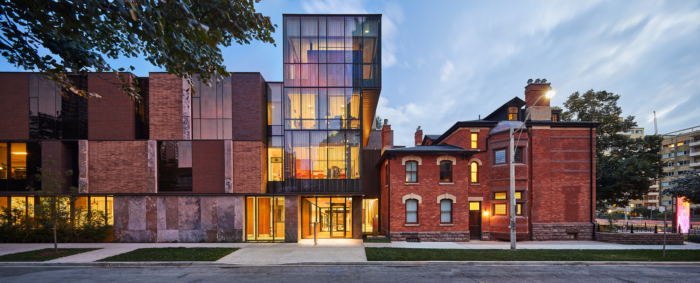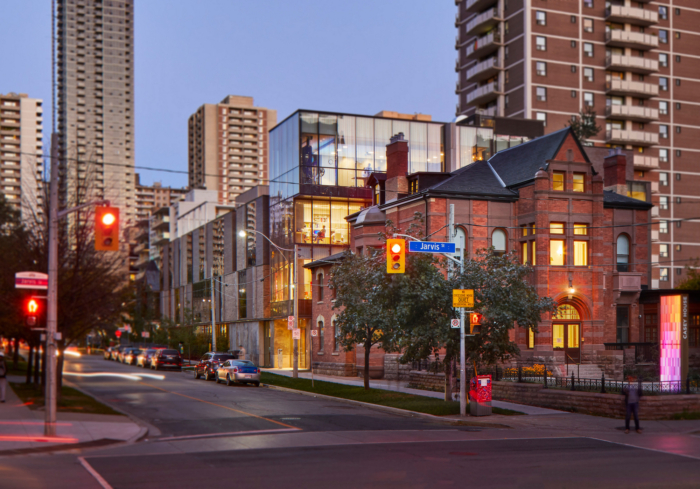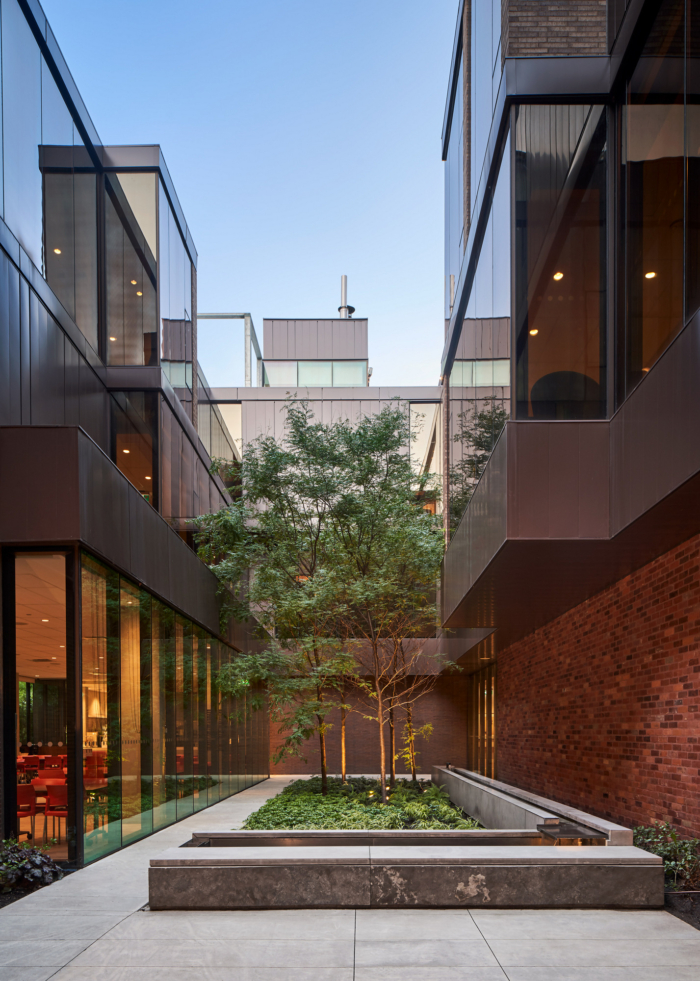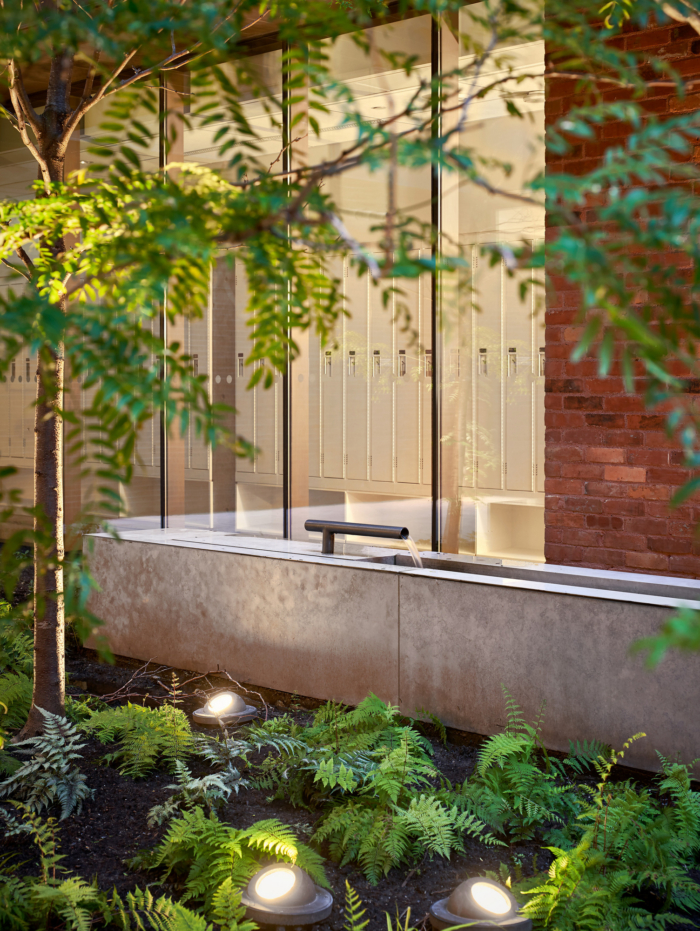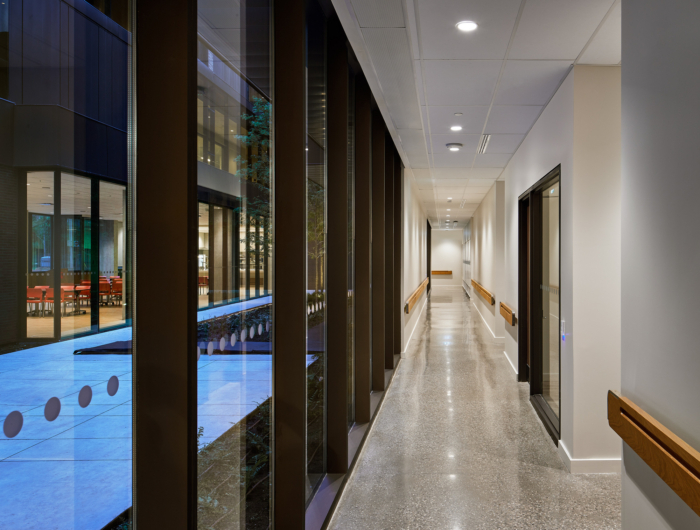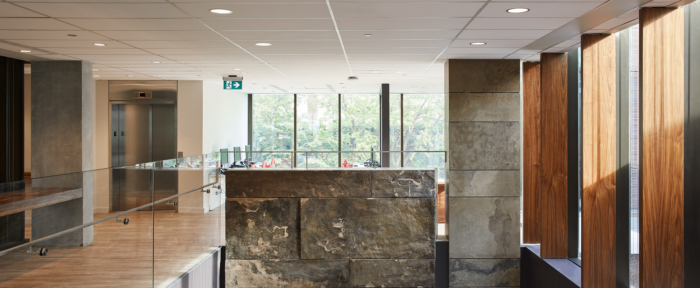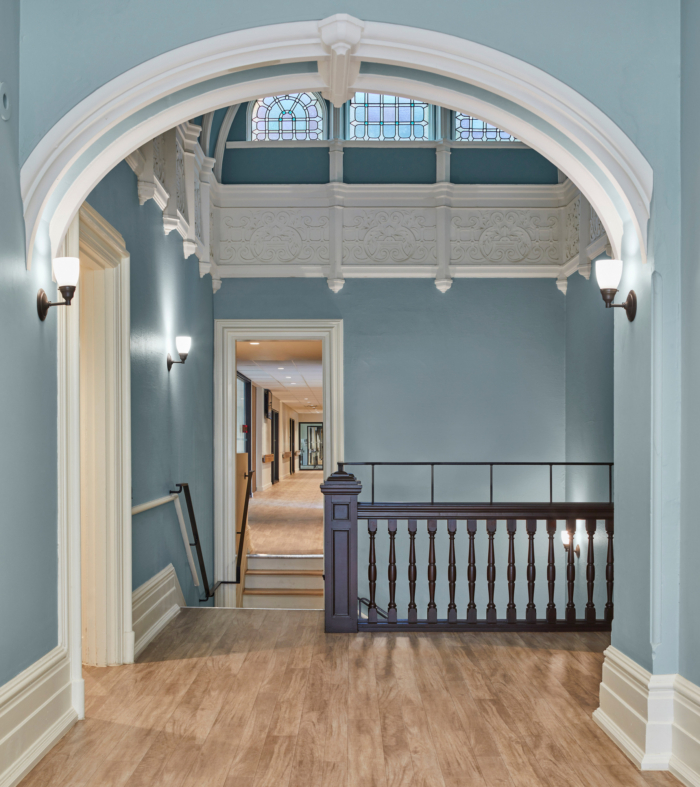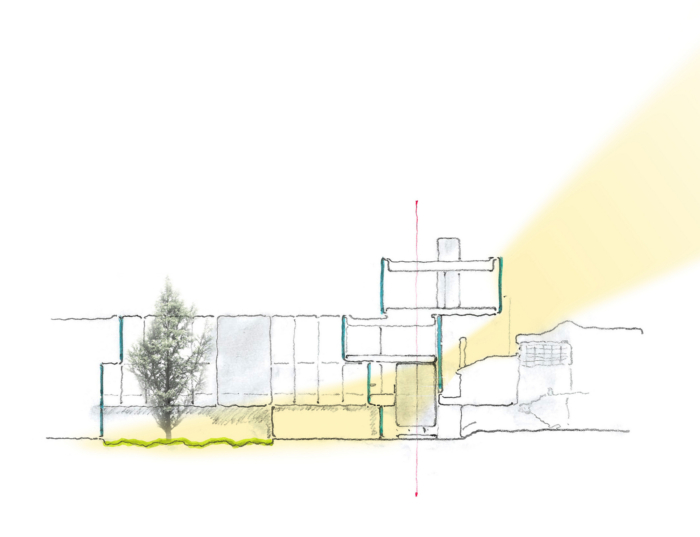Casey House
Hariri Pontarini Architects designed the Casey House with great care and attention to the history of the building in Toronto, Canada.
Ten years in the making, the renovation and extension to Casey House, a specialized healthcare facility for individuals with HIV/AIDS, develops a new prototype for hospitals. The facility meets the needs of patients and health care providers in a setting designed to evoke the experience and comforts of home. With a new Day Health Program servicing a roster of 200 registered clients and 14 new inpatient rooms, the 59,000 square foot addition brings much needed space and modernized amenities to augment and renovate the heritage-designated Victorian mansion. The new structure embraces the existing building, preserving its qualities and organizing day-to-day user experience around a landscaped courtyard.
In order to create a comfortable, home-like user experience, the embrace emerged as a unifying theme—one of warmth, intimacy, comfort, privacy, connectivity, and solidity. Similarly, the language of the quilt, a symbolic expression of the battle against HIV/AIDS, was a source of inspiration for the design.
The architecture is a physical manifestation of the embrace in both the vertical and horizontal planes. The extension reaches over and around the existing heritage designated Victorian mansion, which has been restored, while the new addition—a robust, textured exterior— surrounds the central courtyard. Beautifully landscaped and alive, the courtyard is visible from every corridor and in-patient room.
As one of the original mansions to be built along Jarvis Street, the retention of the existing 1875 building (known colloquially as the “Grey Lady”) maintains the original character of the street, while the addition introduces a dignified juxtaposition of the old and new.
The façade, consisting of a palette of various brick, heavily tinted mirrored glass, and crust-faced limestone, is highly particularized and rich, and becomes the architectural manifestation of the quilt. A garden in front, for delight and contemplation, is surrounded with a beech hedge for intimacy and privacy.
Once inside, the experience is about engagement of the old and new, and the organization—the embrace—around the courtyard, which is the ever-present symbol of life-affirming green, water, and light (trees, fountain, and sunlight). Emphasizing the relationship between the old and new, the heritage building’s brick remains exposed in the Living Room. This central gathering space, featuring a two-storey atrium, is anchored by a full-height fireplace crafted from Algonquin Limestone. A bridge connects the heritage and new spaces on the second floor with long views stretching from end to end.
The courtyard allows direct sunlight into the core of the building on all floors. Given the private nature of the facility, it provides protected outdoor space for users, as well as transparency and clear sightlines across the project.
Sustainable features were inherently related to the clients’ healthcare and wellbeing and were thus seamlessly integrated into the design. Green spaces, high efficiency tinted glass, cross-ventilation via the courtyard and operable windows, bike racks, rain water collection cisterns, and locally sourced and reclaimed materials also add to the sustainability profile of the project.
Architect: Hariri Pontarini Architects
Contractor: BIRD Construction
Photography: Doublespace Photography


